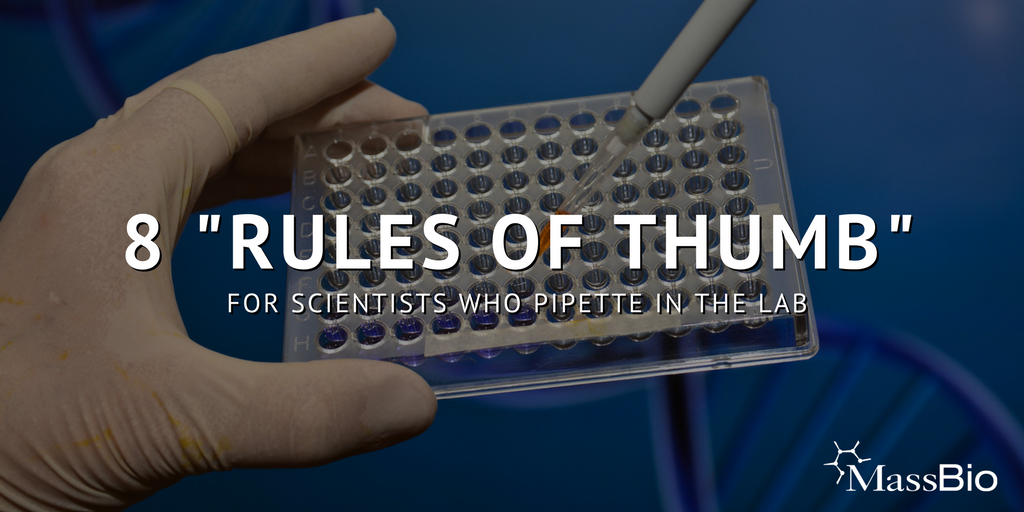
The following is a list of eight helpful tips for your lab to consider, based on 25 years of servicing pipettes for our Cambridge customers. These techniques are intended to further improve your pipetting practices, and ensure the most accurate results for your critical assays.
Consider these best practices the next time you pipette:
1. USE THE FORCE—Use consistent force when installing the pipette tip: When installing your pipette tip, it’s important that you apply the same, consistent force to ensure a proper fit each time. Ever hear that “BANG! BANG!BANG!” sound in the lab? Newer pipettes have technologies that remove this need! Do not jam the tip in place; this can damage your pipette tip and negatively affect your results.
2. PRACTICE PRE-GAME RITUALS–Condition, condition, condition: To condition the pipette tip, be sure to pre-wet the tip by aspirating liquid into the tip once and then dispensing all liquid out before aspirating your measured volume. Do this two to three times before taking the desired volume.
3. KNOW YOUR ANGLES—Aspirate at 90 degrees, dispense at 45 degrees: The angle at which the pipette aspirates and dispenses a substance is important for test accuracy. These precise angles ensure that the desired measurement enters the tip properly and that all of the liquid fully dispenses without leaving any residue in the tip. Aspirating at an angle can increase the volume by up to 10%!
4. NO DUNKING PLEASE—When aspirating, place the tip just below the surface: Putting the tip just below the surface of the liquid, approximately 2-3mm, ensures no air is being aspirated and allows you to draw up no more than the measured volume. Too deep will increase the chance of residual on the outside of the tip, and too shallow will cause an air-driven vortex to form!
5. HASTE MAKES WASTE—Release plunger slowly: During the aspiration process, it is important to release the plunger with a slow, controlled motion to avoid air bubbles or splashing of your precious sample.
6. STAY TO THE SIDE–Dispense against the side of the receptacle: When possible, dispense against the side of receptacle or into the liquid already in the receptacle. Never shoot or squirt the liquid into the air; doing so can affect your measurement results. Let the container’s surface tension assist you in “pulling” the liquid out of the pipette tip.
7. GO ALL OUT—Touch off at the very end of your receptacle: When dispensing, ensure all the liquid comes out of the tip and touch off at the very end of the receptacle. Use the blow-out at the same time. Water tension can sometimes prevent all of the liquid from exiting the tip so be sure to pull the residual amount out of the tip.
8. LET IT GO–Don’t hold the pipette when you’re not pipetting: Holding a pipette that is not in use affects thermal transfer, which can ultimately effect measurement. There are environmental factors that can affect the state of a pipette, including temperature, altitude, and liquid density, so be cognizant of these factors when pipetting. Let the pipette rest on its stand, not your hand.
If you’re noticing some technique differences among your team members in the lab, consider our Pipette Contest at MassBio on Feburary 14th. Lunch will be served and awards given to those who can achieve the greatest accuracy among their labmates!